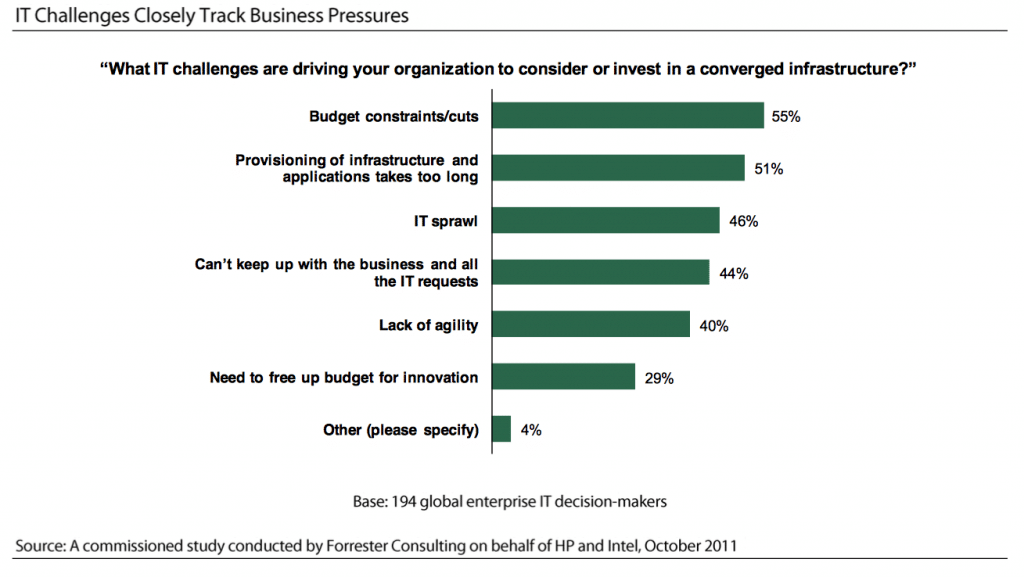Go to any IT conference and the resounding message from the people at the coalface is always ‘We want IT systems that are complicated to deploy, expensive and don’t deliver what they promise”.
Did we get that wrong? Yes, of course, but it’s what most tech vendors ‘think’ you’re saying. Year after year they keep churning out products that are nothing more than sticking plaster updates to what is essentially a broken core solution. Each new edition adds nothing but complexity, cost, and headaches.
A good example of this is VDI, where servers, switches, SAN, and hypervisors are piled on top of each other to make a brilliant idea, painful to deliver. Tack on the Cloud and Mobility and a solution that should be streamlining your IT operations becomes a bucket that leaks reliability, resources, and management patience.
So fix it, dear Liza!
In the last few years, Hyper-Converged Infrastructure (HCI) has emerged as a genuine answer to the problem. What HCI gives you first and foremost is simplicity. By combining IT infrastructure and services below the hypervisor into a single shared pool of x86 resources, HCI eliminates the need for those discrete IT components.
Predominantly built on commodity X86 hardware, HCI adds value by focusing on software-defined storage as well as data control and much simpler management. This means IT teams spend less time optimizing the platform and more time working on doing the things that add value to the business.
Key drivers and use cases for Hyper-Converged Infrastructure adoption.
As we mentioned above, interest in Virtual desktop infrastructure (VDI) is one of the drivers of bringing HCI to people’s attention. It is particularly suitable for VDI for Remote and Branch Offices (ROBO) because it reduces the amount of equipment needed and eases implementation, scaling, and management in offices with little or no dedicated IT staff. HCI also provides predictable performance and a simpler way to calculate the cost of ownership and cost per desktop.
This chart from Forrester’s report Converged Infrastructure: Attitudes and Acceptance, shows which challenges are driving organizations to consider and invest in Hyper-Converged Infrastructure.
Some benefits of convergence
Fewer silos.
HCI allows IT organizations to break down the silos that have built up in the data center. Removing silos helps companies maximize their data centre investments, reduce complexity, and promote growth and scale.
Flexibility and agility.
HCI gives you greater flexibility than is possible with legacy-based approaches to the data centre.
Open environment.
With hyper-converged infrastructure, you get a more open approach to the data center environment and an easier way to deploy emerging tools, such as OpenStack. It also enables you to take advantage of ‘container technologies’ that can help take virtualization to the next level.
HCI vendors for SMBs and Enterprises
The number of vendors has grown over the last 3 years, but the charge has been led by previously unknown companies who have taken the lead from industry giants like Dell and HPE, who only recently released HCI products.
In addition to one of the earliest entrants into the market, VCE/EMC, three vendors we’ve been working with for a while are Nutanix, Atlantis Computing, and Scale Computing.
Atlantis Computing HyperScale
Atlantis HyperScale is a family of hyper-converged appliances that feature all flash storage, exclusively. The software-defined storage (SDS) base is Atlantis USX that has been shipping since early 2014. Two fixed-capacity models are available, the CX-12 with 12 solid-state drives per appliance and the CX-24 with 24 drives. More about Hyperscale
Nutanix Acropolis
Nutanix “Xtreme Computing Platforms” are purpose-built, hyper-converged appliances for virtualized environments that integrate server, network, storage, and hypervisor components into a single unit. Nutanix’s NX series (nine models available) provides up to 60TB of hard disk capacity and 38TB of flash capacity per appliance. Nutanix also offers software for implementation by OEMs in their products. The Dell XC Series is a combination of Nutanix software with Dell hardware. More about Acropolis
Scale Computing HC3
Scale Computing’s HC3 platform is a hyper-converged appliance for virtualized environments. Scale Computing claims the HC3 appliances install in under an hour, and can be expanded and upgraded with no downtime. A unified management capability driven by the HC3’s HyperCore operating system integrates all functionality. More about HC3
Seeing is believing
If consolidating infrastructure hardware, cutting costs and simplifying management is high on your agenda then one of the simplest ways to see what converged platforms can do for you is to try them. The vendors above and any of the new guys will provide evaluation devices if you’re serious about convergence.


